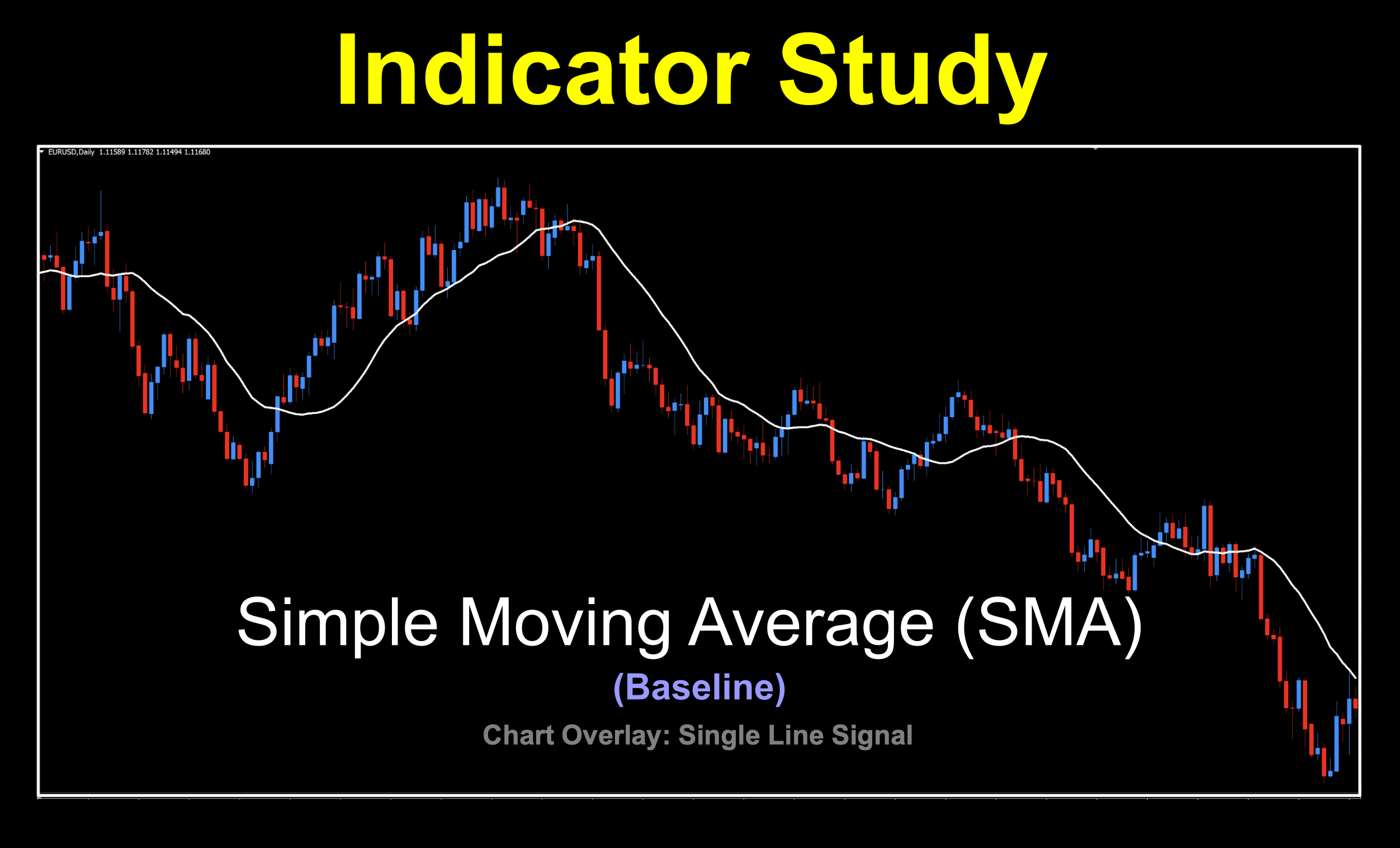Welcome to the next Stonehill Forex Indicator Study. This research represents an investigative look into how and why some indicators work and some don’t work as well.
New Versus Old
We are departing from our usual practice by reviewing an indicator which is actually part of the downloaded MT4 platform. The reason why we chose to review this indicator is because it has come up in recent conversations, and it actually provides good baseline signals.
Our Next Indicator Choice is…
The SMA; also known as the Simple Moving Average, is our next confirmation indicator choice. This indicator is simple to understand, use and experiment with and makes a good baseline indicator. The SMA is computed by calculating the average of a specific range of prices, which can be opening, closing, high, or low, by the number of periods in that range. Use the ‘closing’ set of prices.
While we like to find indicators more current, this is probably one of the oldest you’ll ever use. The moving average was introduced by a math historian named Jeff Miller in 1901. This indicator has been used in every market, giving rise to many variations. We will be examining some of those more modern variations in future blogs.
Baseline Indicator
A simple moving average presents as an on-chart indicator, overlaying price (See snapshot below). We consider it a “baseline indicator”. A baseline indicator falls into the category of indicators whereby it serves as an initial gatekeeper when setting up your algorithm. These concepts are explained in great detail in the Stonehill Forex Advanced Course HERE.
Advantages
* Easy to use
* Smooths out price
* Helps determine direction and strength of trend
Such a Lovely View
Below is a screenshot of what the indicator looks like on the daily time frame. Note that we’ve changed the color of the candles to white to remove any emotional bias and that only the indicator is prominent.

How We Use It
As a crossover indicator similar to the HMA (Hull Moving Average Blog), a signal is defined when price crosses and CLOSES either above or below the SMA line. The default color of the SMA is blue and can be changed to your liking. Let’s review the highlighted marks on the picture below to understand what they mean. Note that the candles have been changed to red and green, indicating direction of price within that period.

Signals
* Long = Price crosses and closes above blue line.
* Short = Price crosses and closes below blue line.
Settings
The setting includes; period, shift, method, and apply to (price). The default settings are 14 periods, zero shift, simple method and close price. Before we take a closer look, I’ll explain what each parameter represents.
Period: The number of period to calculate the moving average line.
Shift: The ability to have all its values shifted forward (positive displacement) or back (negative displacement) in time. (We’ll be ignoring this setting, as the only real use it has is to align it with highs and lows. This does not help us find the best settings.) Leave it at 0.
Method: Simple, Exponential, Smooth, Linear Weighted – the manner in how data is calculated from price. Since we’re discussing the SMA, this will remain at “Simple”.
Price: Close, Open, High, Low, Median, Typical, Weighted, Previous, First Indicator – which specific set of price points the indicator uses to calculate the resultant data and subsequent appearance of the indicator. This will remain at “Closed”.




Where is it?
Part of the MT4 package, you can find it under “Navigator” button, which lists the indicators. Look for the “Trend” folder and expand it to find the Moving Average indicator. See the picture below.

For more detail about this indicator, check out the article on Wikipedia: Moving Average
And That’s Not All Folks
You noticed that we mentioned more than “simple” and “closed” options in the settings explanation. Since the moving average is such a powerful indicator, we’ll be dedicating a series of blogs just to different settings and different types of moving averages which can be used as baseline indicators. Some of these have been developed much more recently. It’s certain to be an eye-opener.
More to Come
There’s a lot more to come. We are excited to provide more trading tips in the near future. Sign up on our contacts page or subscribe to our YouTube channel. Receive early notifications as we continue to publish helpful, relevant, and informative Forex related material to support your quest to becoming a better trader.
Our only goal is to make you a better trader.
BTW – Any information communicated by Stonehill Forex Limited is solely for educational purposes. The information contained within the courses and on the website neither constitutes investment advice nor a general recommendation on investments. It is not intended to be and should not be interpreted as investment advice or a general recommendation on investment. Any person who places trades, orders or makes other types of trades and investments etc. is responsible for their own investment decisions and does so at their own risk. It is recommended that any person taking investment decisions consults with an independent financial advisor. Stonehill Forex Limited training courses and blogs are for educational purposes only, not a financial advisory service, and does not give financial advice or make general recommendations on investment.

